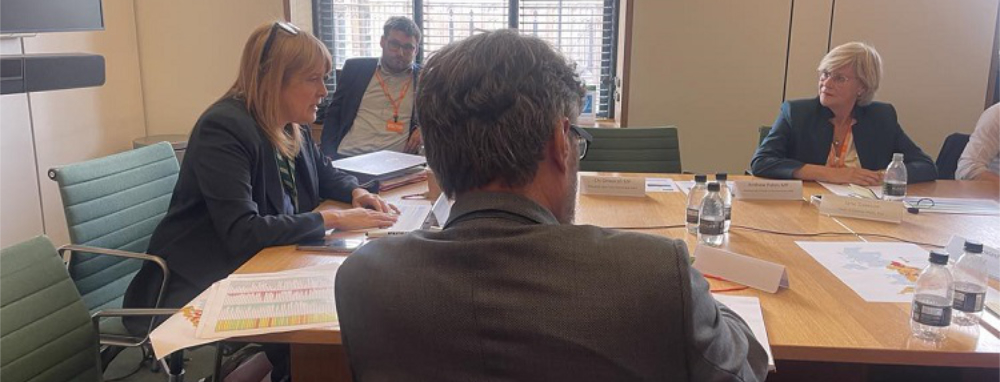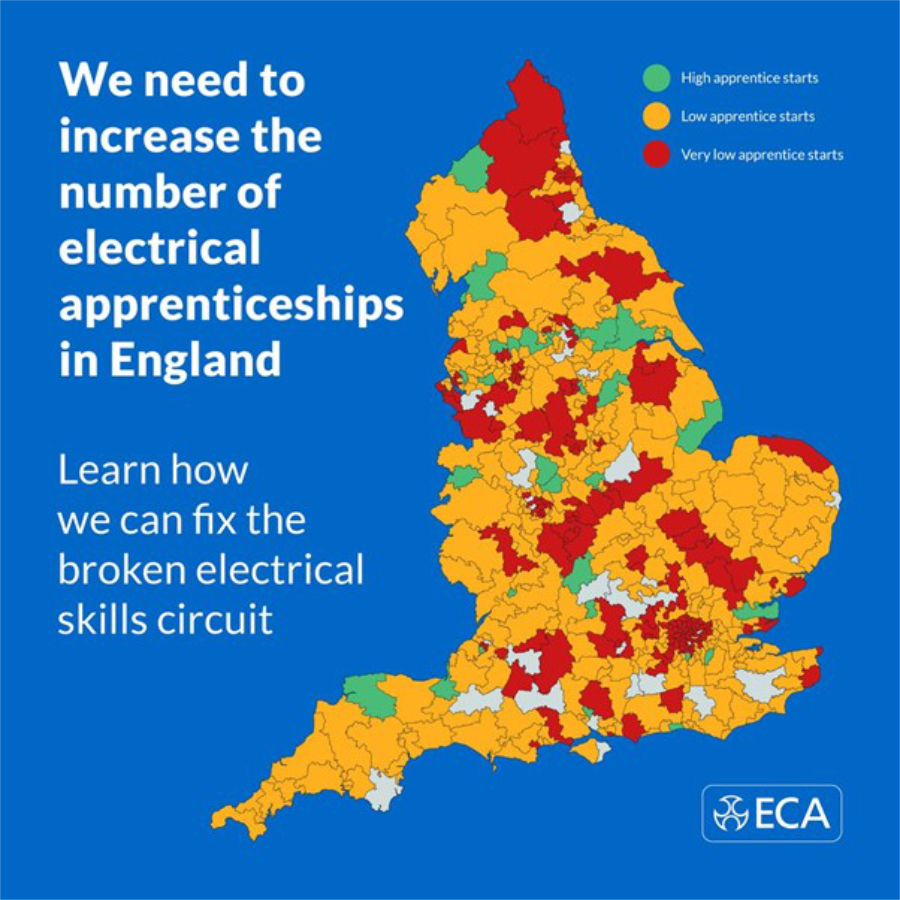Skills gap highlighted to Minister for Industry
ECA convened with Labour MPs and Government Ministers this week for a roundtable discussion hosted at Portcullis House.
The event, sponsored by Chi Onwurah MP, focused on addressing the critical shortage of qualified electricians needed to meet the UK’s net-zero ambitions. The discussion was attended by Sarah Jones, Minister of State for Industry, DBT and DESNZ (pictured), as well as Labour MPs whose constituencies are experiencing a severe shortfall in electrical apprenticeships and skilled workers.
Jane Dawson, Head of External Affairs, said “If we are to achieve meaningful change in the system, we must continue to have dialogue with policymakers, education providers and the wider industry. There is a huge opportunity for our industry as the country electrifies at an increasing pace. Our sector is key to the government's mission for economic growth and net-zero, while providing lots of well-paid jobs."
ECA’s Electrical Skills Index was a key focus of the discussion. This dataset offers a detailed analysis of the disparity between the number of individuals enrolling in classroom-based electrical courses and those entering into apprenticeships. The Index reveals that while over 20,000 individuals enrol in classroom-based training each year, fewer than 10% make the transition into apprenticeships – which is a necessary step to get the hands-on experience required. The other 90% are unable to get a foothold in an industry that desperately needs more electricians.
The Electrical Skills Index identifies constituencies across England where the shortage of qualified electricians is particularly acute, including constituencies represented by several of the MPs in attendance. This shortage poses a major challenge for the Labour Government’s mission-led agenda, from building 1.5 million new homes, to becoming a clean energy superpower.
The roundtable provided an opportunity for Labour MPs to discuss the local challenges their constituencies face and explore policy solutions to increase the number of apprenticeships. ECA’s Charter to #RechargeElectricalSkills was presented as a roadmap for addressing the crisis. The Charter advocates for:
Placing qualified electricians at the heart of net-zero: Ensuring skilled electricians lead the deployment of low-carbon technologies, such a heat pumps and EV chargers.
Increasing the number of qualified electricians: Expanding educational and training pathways to boost the number of certified professionals.
Establishing a stronger skills pipeline: Building clearer transitions from education to employment, with enhanced apprenticeships and industry partnerships.
The roundtable underscored the urgent need for collaboration between government, industry, and educational institutions to address the growing net-zero skills gap. With the Labour Government’s ambitious goals in clean energy and infrastructure development, the skills crisis is becoming a major barrier to success.
ECA remains committed to working closely with policymakers to ensure that the UK's electrical workforce is equipped to meet the demands of the future and to realise the UK’s net-zero ambitions.
This article appears on the ECA news and blog site as 'ECA highlights skills gap with Minister for Industry' dated 11 September, 2014.
--ECA
[edit] Related articles on Designing Buildings
- At a Crossroads; Pathways to a Net Zero Future.
- Beware of rogue trainers warns the electrotechnical skills partnership
- Building engineering business survey highlights persistent skills gap.
- ECA calls on London Mayor to prioritise green electrical skills in the capital.
- ECA learning zone and industry focus video series.
- Electrical sector skills recharge at the House of Commons, as skills shortage bites.
- Engineering services still struggle with labour shortages.
- Future of Green Skills in Sussex.
- New electrical apprentice rates.
- SkillELECTRIC Top 8 Competitors Named.
- The ECA Recharging Electrical Skills Charter included in key report
- Westminster urged to focus on local skills improvement or face skilled electrician shortfall.
Featured articles and news
Retrofit 25 – What's Stopping Us?
Exhibition Opens at The Building Centre.
Types of work to existing buildings
A simple circular economy wiki breakdown with further links.
A threat to the creativity that makes London special.
How can digital twins boost profitability within construction?
The smart construction dashboard, as-built data and site changes forming an accurate digital twin.
Unlocking surplus public defence land and more to speed up the delivery of housing.
The Planning and Infrastructure Bill
An outline of the bill with a mix of reactions on potential impacts from IHBC, CIEEM, CIC, ACE and EIC.
Farnborough College Unveils its Half-house for Sustainable Construction Training.
Spring Statement 2025 with reactions from industry
Confirming previously announced funding, and welfare changes amid adjusted growth forecast.
Scottish Government responds to Grenfell report
As fund for unsafe cladding assessments is launched.
CLC and BSR process map for HRB approvals
One of the initial outputs of their weekly BSR meetings.
Architects Academy at an insulation manufacturing facility
Programme of technical engagement for aspiring designers.
Building Safety Levy technical consultation response
Details of the planned levy now due in 2026.
Great British Energy install solar on school and NHS sites
200 schools and 200 NHS sites to get solar systems, as first project of the newly formed government initiative.
600 million for 60,000 more skilled construction workers
Announced by Treasury ahead of the Spring Statement.
The restoration of the novelist’s birthplace in Eastwood.
Life Critical Fire Safety External Wall System LCFS EWS
Breaking down what is meant by this now often used term.
PAC report on the Remediation of Dangerous Cladding
Recommendations on workforce, transparency, support, insurance, funding, fraud and mismanagement.
New towns, expanded settlements and housing delivery
Modular inquiry asks if new towns and expanded settlements are an effective means of delivering housing.




























